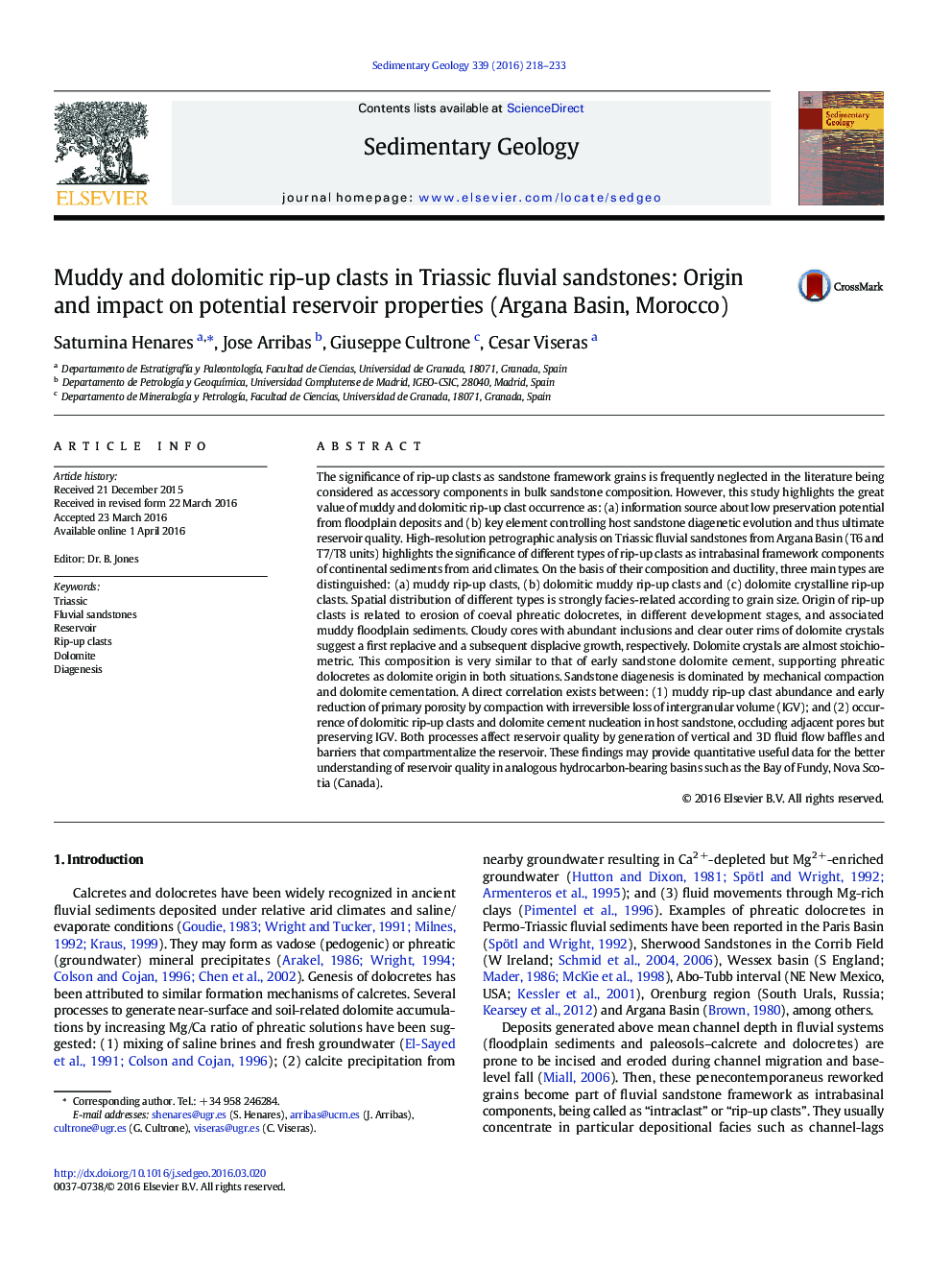| کد مقاله | کد نشریه | سال انتشار | مقاله انگلیسی | نسخه تمام متن |
|---|---|---|---|---|
| 6433160 | 1636024 | 2016 | 16 صفحه PDF | دانلود رایگان |
- Rip-up clasts may represent a significant part of host sandstone framework.
- Spatial distribution of these grains is strongly facies-related.
- There are three different types according to their composition and ductility.
- They are important sources of information for paleogegraphic reconstructions.
- Their occurrence is a key factor on diagenetic evolution and reservoir quality.
The significance of rip-up clasts as sandstone framework grains is frequently neglected in the literature being considered as accessory components in bulk sandstone composition. However, this study highlights the great value of muddy and dolomitic rip-up clast occurrence as: (a) information source about low preservation potential from floodplain deposits and (b) key element controlling host sandstone diagenetic evolution and thus ultimate reservoir quality. High-resolution petrographic analysis on Triassic fluvial sandstones from Argana Basin (T6 and T7/T8 units) highlights the significance of different types of rip-up clasts as intrabasinal framework components of continental sediments from arid climates. On the basis of their composition and ductility, three main types are distinguished: (a) muddy rip-up clasts, (b) dolomitic muddy rip-up clasts and (c) dolomite crystalline rip-up clasts. Spatial distribution of different types is strongly facies-related according to grain size. Origin of rip-up clasts is related to erosion of coeval phreatic dolocretes, in different development stages, and associated muddy floodplain sediments. Cloudy cores with abundant inclusions and clear outer rims of dolomite crystals suggest a first replacive and a subsequent displacive growth, respectively. Dolomite crystals are almost stoichiometric. This composition is very similar to that of early sandstone dolomite cement, supporting phreatic dolocretes as dolomite origin in both situations. Sandstone diagenesis is dominated by mechanical compaction and dolomite cementation. A direct correlation exists between: (1) muddy rip-up clast abundance and early reduction of primary porosity by compaction with irreversible loss of intergranular volume (IGV); and (2) occurrence of dolomitic rip-up clasts and dolomite cement nucleation in host sandstone, occluding adjacent pores but preserving IGV. Both processes affect reservoir quality by generation of vertical and 3D fluid flow baffles and barriers that compartmentalize the reservoir. These findings may provide quantitative useful data for the better understanding of reservoir quality in analogous hydrocarbon-bearing basins such as the Bay of Fundy, Nova Scotia (Canada).
Journal: Sedimentary Geology - Volume 339, 15 June 2016, Pages 218-233
